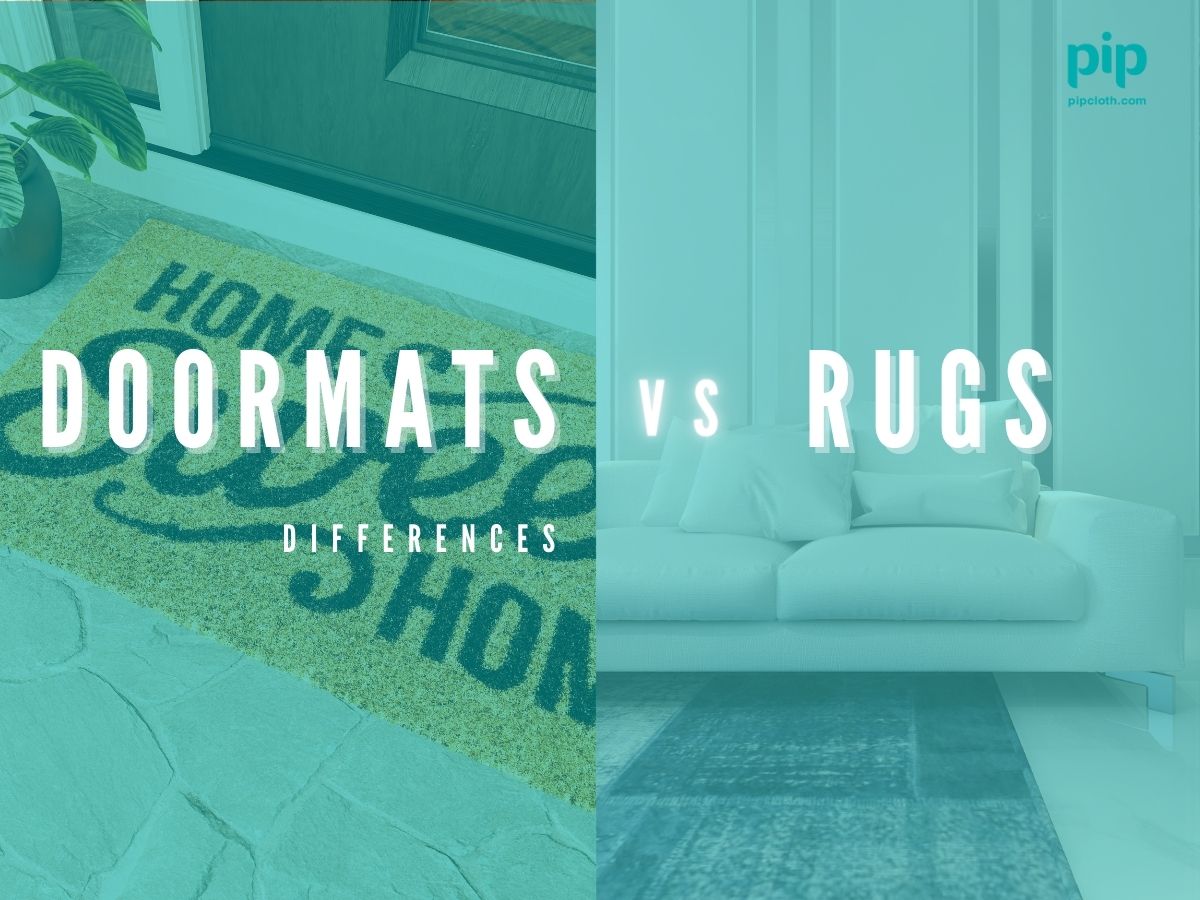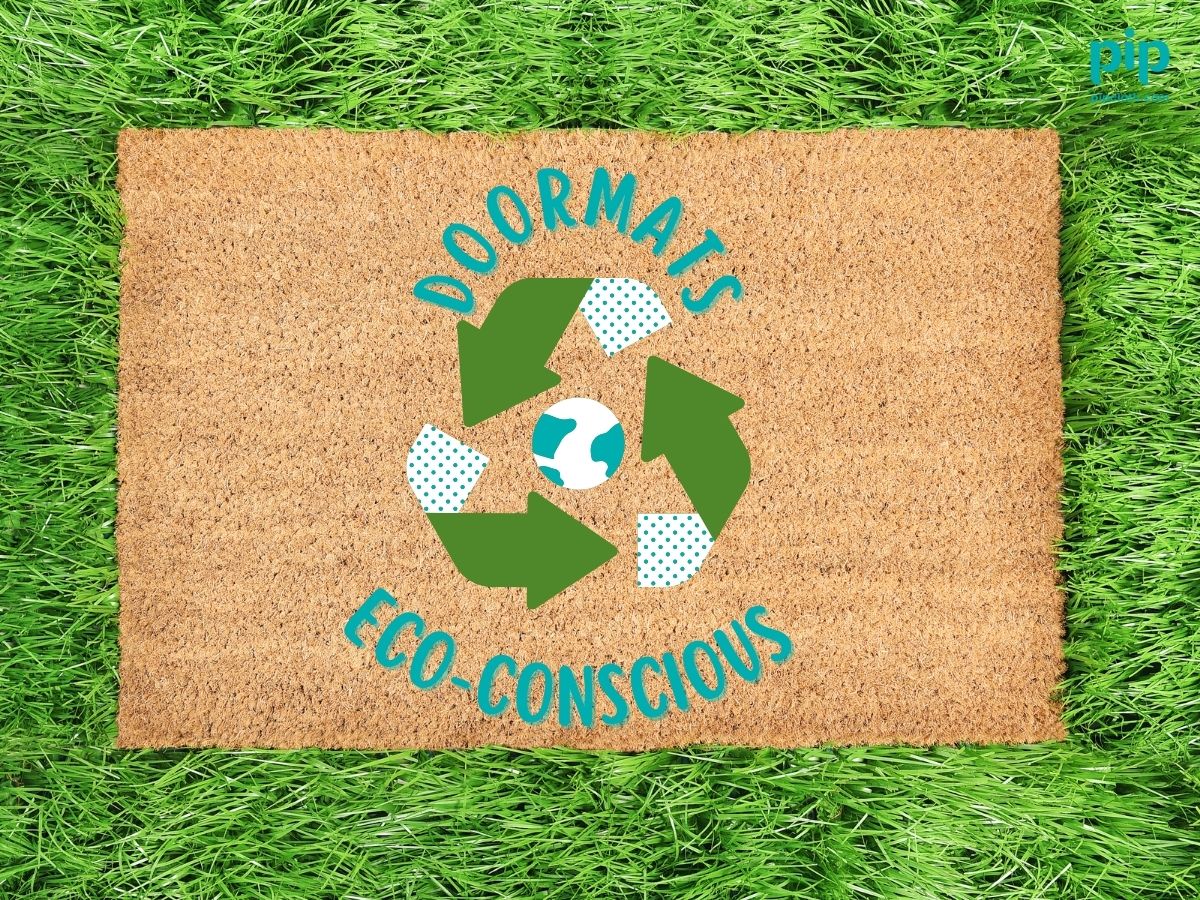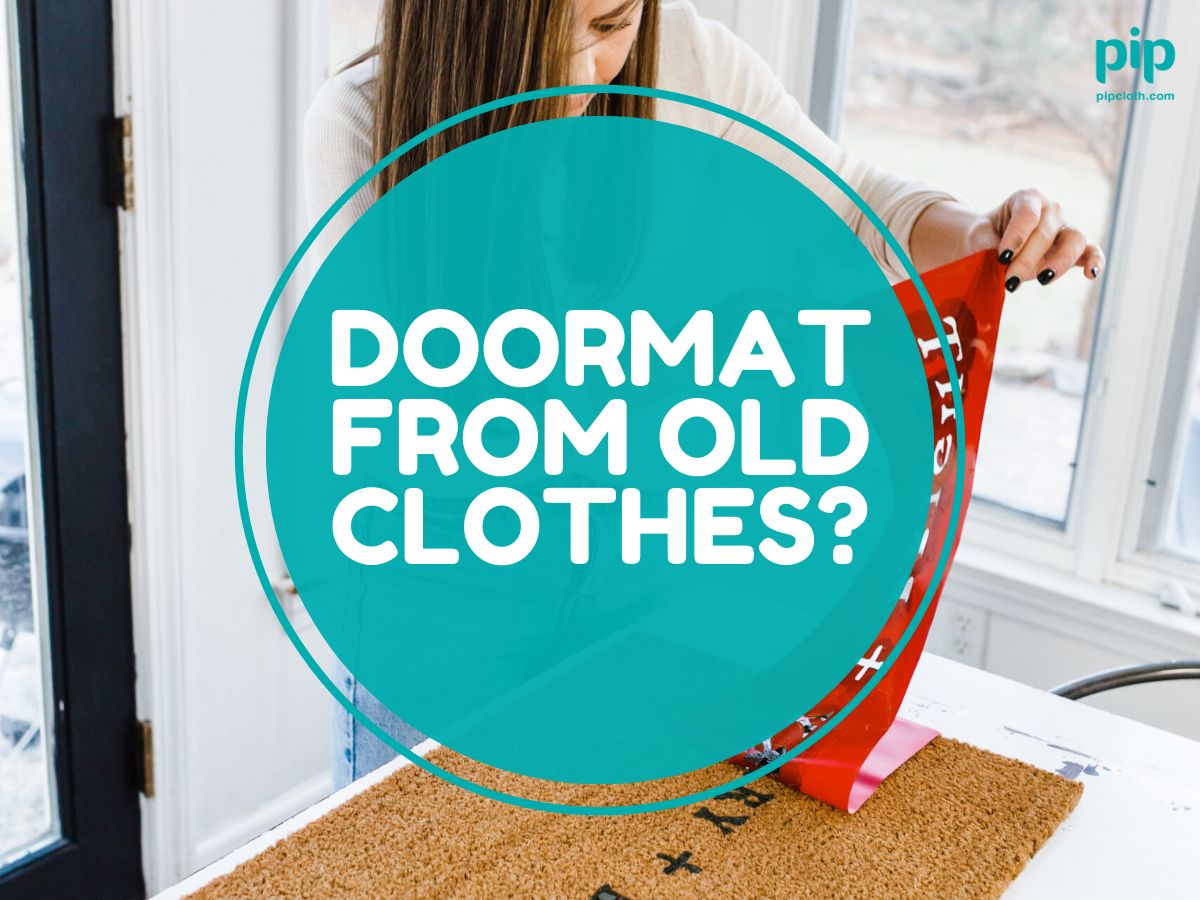When it comes to selecting the perfect doormat for your home, the choice between natural and synthetic materials is a crucial one. A doormat not only serves the functional purpose of protecting your flooring and keeping your entryway clean, but it also plays a significant role in enhancing the overall aesthetic appeal of your home’s entrance. In fact, a study by the National Association of Home Builders found that 97% of homeowners consider a well-designed entryway to be an important feature in their home. In this article, we’ll delve into the world of natural and synthetic doormat materials, exploring their unique characteristics, benefits, and drawbacks. We’ll cover essential topics such as understanding the role of doormats in home design, the charm and eco-friendliness of natural materials, the durability and low maintenance of synthetic options, factors to consider when making your choice, maintenance and care tips, and even the possibility of combining materials for optimal performance. By the end of this comprehensive guide, you’ll be well-equipped to make an informed decision and select the ideal doormat material that perfectly balances style and functionality for your home.
Understanding the Role of Doormats in Home Design
Doormats serve a multifaceted purpose in home design, combining both functional and aesthetic elements to create a welcoming and practical entryway. From a functional standpoint, doormats act as a first line of defense against dirt, debris, and moisture, helping to keep your interior floors clean and dry. The abrasive fibers or textured surface of a doormat effectively scrapes off dirt and debris from shoes, while the absorbent materials wick away moisture, preventing it from being tracked inside. A study by the University of Arizona found that a single doormat can trap up to 60% of the dirt and bacteria that would otherwise be brought into the home.
Aesthetically, doormats serve as a visual extension of your home’s interior design, setting the tone for the overall style and ambiance of your space. A well-chosen doormat can complement the colors, patterns, and textures of your entryway, creating a cohesive and inviting look. It acts as a first impression for guests, offering a glimpse into your personal taste and style. According to a survey by the National Hardware Show, 78% of consumers consider the style and design of a doormat to be an important factor in their purchasing decision.
| Role of Doormats | Functional Benefits | Aesthetic Benefits |
| Dirt and debris removal | Traps up to 60% of dirt and bacteria | Complements entryway design |
| Moisture absorption | Prevents tracking of water and mud | Creates a cohesive look |
| Floor protection | Extends the life of interior flooring | Reflects personal style |
| Safety | Provides traction and slip resistance | Enhances curb appeal |
Natural Doormat Materials
Charm and Eco-Friendliness Natural doormat materials, such as coir, jute, and coconut fiber, offer a unique combination of charm, texture, and eco-friendliness that appeals to many homeowners. These materials are derived from renewable and sustainable sources, making them an environmentally conscious choice for those looking to reduce their carbon footprint.
Coir, a natural fiber extracted from the outer husk of coconuts, is known for its exceptional durability and weather resistance. The tough and resilient fibers of coir can withstand heavy foot traffic and exposure to the elements, making it an ideal choice for outdoor or high-traffic areas. In fact, a coir doormat can last up to 5 years with proper care and maintenance. Coir doormats also possess a natural resistance to mold and mildew, thanks to the high lignin content in the fibers, which prevents the growth of these harmful organisms. In addition to its practical benefits, coir offers a rustic and organic aesthetic, with its earthy tones and unique variations in color and weave.
Jute, another popular natural doormat material, is known for its softness and comfort underfoot. Unlike the rough texture of coir, jute fibers are finer and more pliable, resulting in a plush, woven surface that feels cozy and welcoming. Jute doormats are gentle on bare feet and pet paws, making them a great choice for indoor use or low-traffic areas. The natural golden hues and organic patterns of jute add a warm and inviting touch to any entryway, complementing a variety of design styles from bohemian to coastal. Jute is also a highly sustainable and eco-friendly material, as it is derived from a fast-growing, renewable plant source that requires minimal water and pesticides to cultivate.
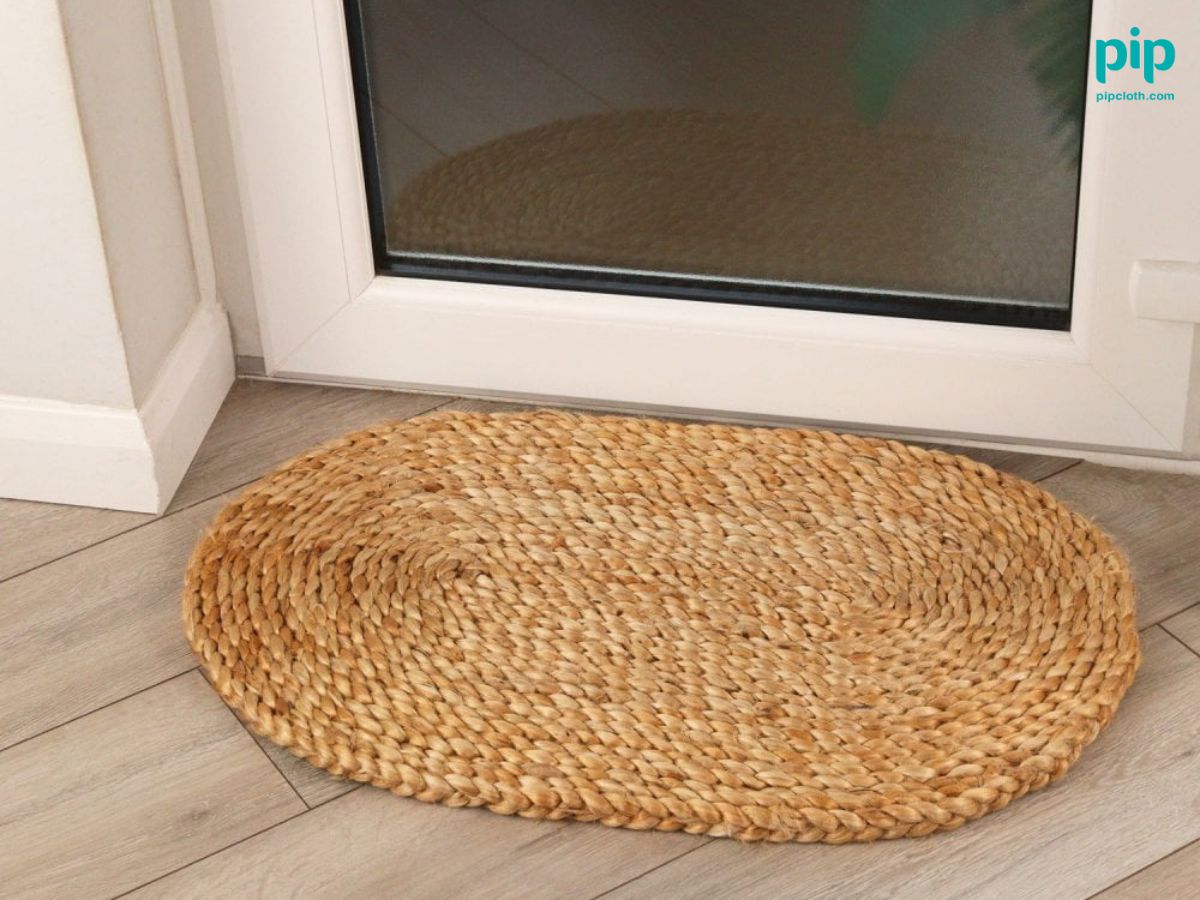
Coconut fiber, often used in combination with coir or as a standalone material, offers excellent absorbency and moisture-wicking properties. The dense fibers of coconut husk effectively trap dirt and moisture, keeping your interior floors clean and dry. A coconut fiber doormat can absorb up to 50% of its weight in water, making it an excellent choice for rainy or snowy climates. Coconut fiber doormats also have a natural resistance to mold and mildew, making them suitable for use in humid or damp environments.
Synthetic Doormat Materials
Durability and Low Maintenance Synthetic doormat materials, such as rubber, polypropylene, and recycled polyester, offer a range of benefits focused on durability, weather resistance, and low maintenance. These materials are engineered to withstand the challenges of high-traffic areas and extreme weather conditions, making them a practical choice for busy households and commercial spaces.
An example for a doormat with Durability and Low Maintenance Synthetic doormat materials: Trump 2024 Vote For The Felon Custom Doormat
Rubber doormats are renowned for their exceptional durability and weather resistance. The tough, flexible nature of rubber allows it to withstand heavy foot traffic, extreme temperatures, and exposure to moisture without cracking, curling, or fading. In fact, a high-quality rubber doormat can last up to 10 years with proper care and maintenance. Rubber doormats also offer excellent slip resistance, thanks to their textured surface that provides traction even in wet conditions. This slip-resistant property is particularly important for entryways, as it helps prevent slips and falls, ensuring the safety of your family and guests.
Polypropylene, a synthetic thermoplastic polymer, is another popular choice for doormats due to its stain and fade resistance. Unlike natural fibers that can easily absorb stains and discolor over time, polypropylene fibers are inherently resistant to staining and fading caused by dirt, spills, and exposure to sunlight. A polypropylene doormat can retain its color and appearance for up to 3 years, even with regular use and exposure to the elements. Polypropylene doormats are also lightweight and quick-drying, making them easy to move or reposition as needed, and ensuring that they dry quickly after exposure to rain or moisture.
Recycled polyester doormats offer a unique combination of eco-friendliness and durability. These doormats are made from recycled plastic bottles or other post-consumer materials, diverting waste from landfills and reducing the environmental impact of production. In fact, a single recycled polyester doormat can repurpose up to 40 plastic bottles. Despite their eco-friendly origins, recycled polyester doormats are incredibly durable and crush-resistant, able to withstand heavy foot traffic without flattening or losing their shape. The synthetic fibers used in these doormats are also resistant to shedding and fraying, ensuring that they maintain a neat and tidy appearance even after extended use.
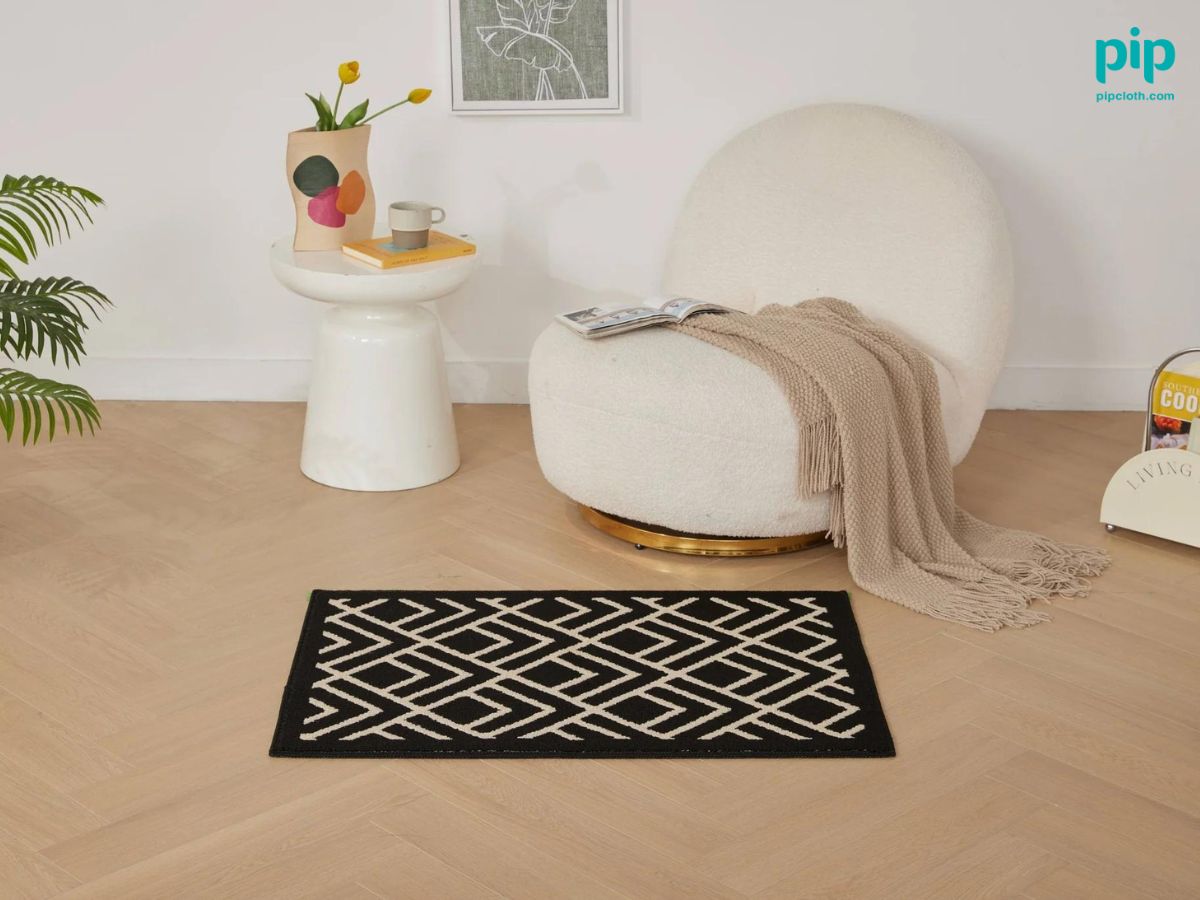
Factors to Consider
When Choosing Doormat Material When selecting the ideal doormat material for your home, there are several key factors to consider, including the location of your doorway, the level of foot traffic it receives, and your personal style and design preferences.
The location of your doorway and its exposure to the elements play a significant role in determining the most suitable doormat material. For covered entryways, such as porches or patios that are protected from direct rain and sunlight, natural fiber doormats like coir or jute may suffice, as they are less likely to be exposed to harsh weather conditions. However, for exposed entryways that are subject to direct rainfall, snow, or intense sunlight, synthetic materials like rubber or polypropylene are often a better choice, as they are more resilient and weather-resistant. In fact, a survey by the National Association of Home Builders found that 62% of homeowners prefer synthetic doormats for their durability and weather resistance.
Another important factor to consider is the level of foot traffic your entryway receives. High-traffic areas, such as the main entrance of a busy household or a commercial space, may require the durability and resilience of synthetic materials like rubber or polypropylene. These materials can withstand the constant pressure of heavy foot traffic without wearing down or losing their effectiveness over time. On the other hand, low-traffic areas, such as a side door or a private residence with fewer occupants, can often accommodate the softer and more delicate natural fibers like jute or coconut fiber, as they will not be subjected to the same level of wear and tear. A study by the University of California, Davis found that doormats in high-traffic areas can accumulate up to 80% more dirt and debris compared to those in low-traffic areas.
Your personal style and design preferences also play a crucial role in selecting the perfect doormat material. If you are drawn to a rustic, organic aesthetic, natural materials like coir, jute, and coconut fiber can provide a charming and textural appearance that complements design styles such as farmhouse, bohemian, or coastal. The earthy tones and unique variations in weave and color of these natural materials add a warm and inviting touch to your entryway. Conversely, if you prefer a sleek, modern look, synthetic materials like rubber or polypropylene offer a clean and uniform appearance that suits contemporary, minimalist, or industrial design aesthetics. The smooth, consistent surface of these materials creates a polished and sophisticated look that can elevate the overall style of your entryway.
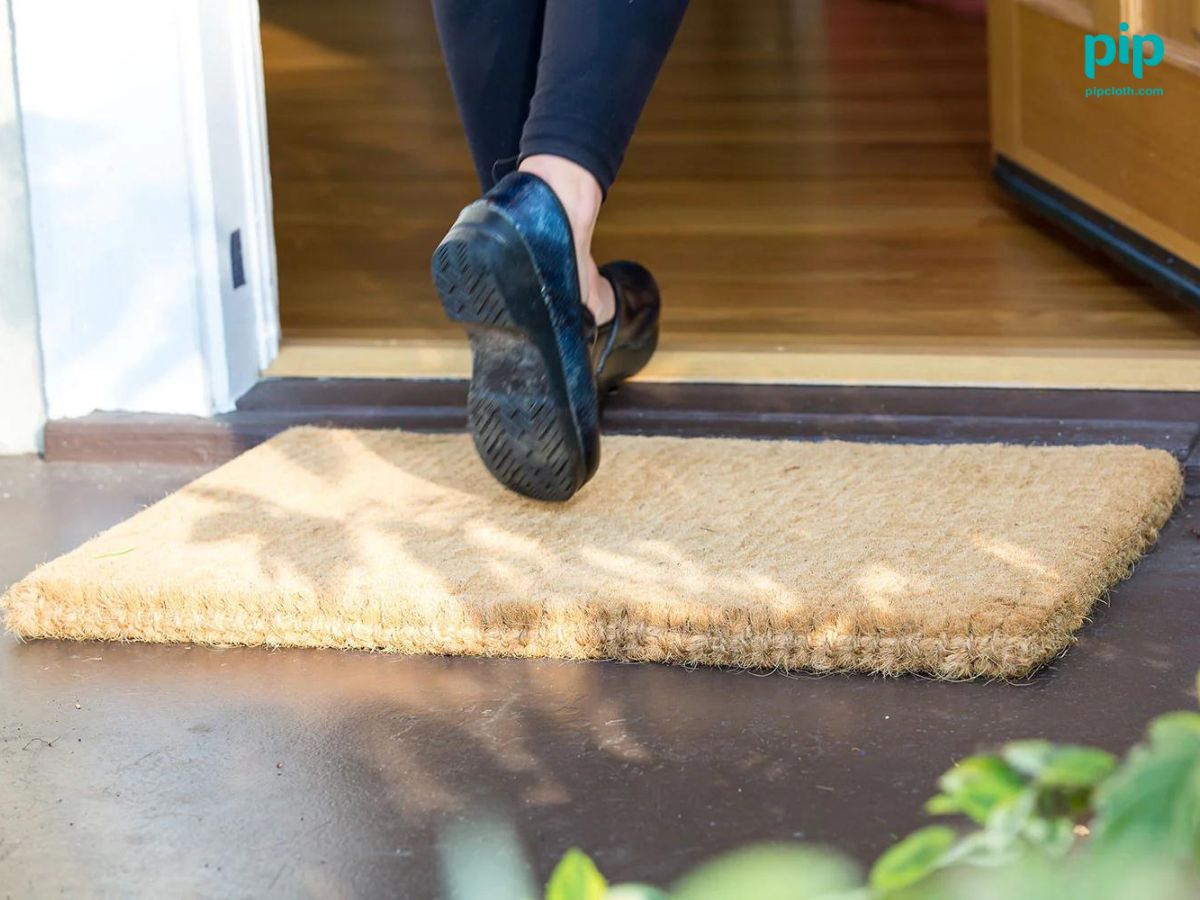
Maintenance and Care for Different Doormat Materials
To ensure the longevity and optimal performance of your doormat, it’s essential to follow the appropriate maintenance and care procedures based on the specific material. Natural fiber doormats, such as coir, jute, and coconut fiber, require regular upkeep to prevent the buildup of dirt and debris and to maintain their attractive appearance.
For natural fiber doormats, regular shaking out and vacuuming are key to removing loose dirt and debris that can accumulate on the surface. Shaking or beating the mat outdoors helps dislodge any trapped particles, while vacuuming the surface with a brush attachment can lift embedded dirt and restore the fibers’ natural texture. When spot cleaning is necessary to address stains or spills, it’s important to use a gentle, pH-neutral detergent and to blot the affected area with a clean, damp cloth. Avoid rubbing or scrubbing the fibers, as this can cause damage or fraying. After cleaning, always allow the doormat to air dry completely before placing it back in use, as excess moisture can lead to mildew growth or deterioration of the natural fibers. Proper maintenance can extend the lifespan of a natural fiber doormat by up to 2 years.
Synthetic doormats, such as rubber, polypropylene, and recycled polyester, are generally easier to maintain and clean compared to their natural counterparts. These materials are often designed to be hosed off or wiped down with water, making it simple to remove dirt, debris, and stains. For outdoor synthetic doormats, a garden hose or pressure washer can be used to rinse away accumulated grime, while indoor mats can be easily wiped down with a damp cloth or mop. When dealing with stubborn stains or heavily soiled areas, a mild detergent can be applied and scrubbed gently with a soft-bristled brush before rinsing thoroughly. It’s important to avoid using harsh chemicals or abrasive cleaners, as these can damage the synthetic fibers or cause discoloration. After cleaning, allow the doormat to air dry completely, or if time is of the essence, use a low-heat setting on a clothes dryer to speed up the process. Regular cleaning can help a synthetic doormat maintain its appearance and functionality for up to 5 years.
Combining Natural and Synthetic Materials for Optimal Performance
For those seeking the best of both worlds, combining natural and synthetic materials in a doormat can offer a perfect balance of style, durability, and functionality. One effective approach is to layer a natural fiber doormat, such as coir or jute, over a synthetic base made of rubber or polypropylene. This combination enhances the overall durability and slip resistance of the doormat, as the synthetic base provides a sturdy, non-slip foundation that extends the lifespan of the natural fiber top layer. The natural fiber doormat remains visible, showcasing its unique texture and aesthetic appeal, while the synthetic base offers added protection and stability. Layering a natural fiber doormat over a synthetic base can increase its lifespan by up to 50%.
Another strategy for combining materials is to choose different doormats for specific areas of your home based on their unique requirements. For high-traffic, exposed areas like the main entryway or outdoor spaces, synthetic materials such as rubber or polypropylene are often the most practical choice. These materials can withstand the constant pressure of heavy foot traffic and the challenges of harsh weather conditions, ensuring long-lasting performance and durability. In contrast, for covered, low-traffic areas like a side entrance or a mudroom, natural materials like coir, jute, or coconut fiber can be used to enhance the charm and style of the space without compromising on functionality. By strategically selecting different materials for different areas, you can create a cohesive and inviting entryway that meets both your aesthetic preferences and practical needs.
Eco-Friendly and Sustainable Doormat Options
For environmentally conscious homeowners, choosing an eco-friendly and sustainable doormat is a priority. Natural fiber doormats, such as those made from coir, jute, or coconut fiber, are inherently biodegradable and compostable, making them an excellent choice for those looking to reduce their environmental impact. These materials are derived from renewable resources and can decompose naturally at the end of their lifespan, returning nutrients to the soil without leaving behind any harmful residues. In fact, natural fiber doormats can biodegrade in as little as 6 months under the right conditions.
In addition to natural fiber options, there are also eco-friendly alternatives available in the synthetic doormat category. Doormats made from recycled materials, such as recycled plastic bottles or recycled rubber, offer a sustainable solution by diverting waste from landfills and reducing the demand for virgin raw materials. These recycled doormats not only help to conserve natural resources but also reduce the carbon footprint associated with the production of new materials. A study by the Environmental Protection Agency found that recycling one ton of plastic can save the equivalent of 1,000 to 2,000 gallons of gasoline.
When shopping for an eco-friendly doormat, it’s important to consider the manufacturing practices and overall sustainability of the company behind the product. Look for manufacturers that prioritize sustainable practices, such as using renewable energy sources, implementing waste reduction initiatives, and ensuring fair labor standards throughout their supply chain. By supporting companies that align with your environmental values, you can make a positive impact and contribute to a more sustainable future.
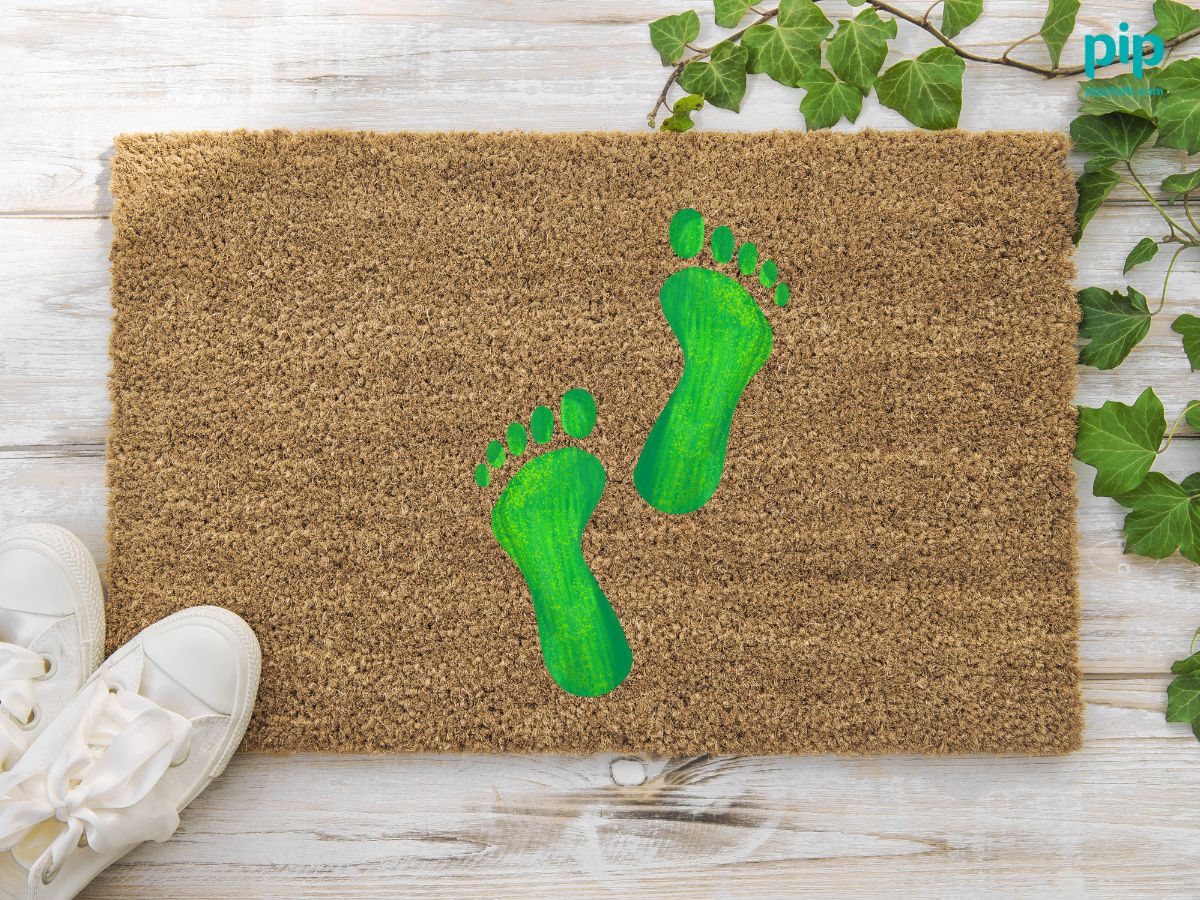
Conclusion
Choosing the ideal doormat material involves weighing the unique characteristics, benefits, and drawbacks of both natural and synthetic options. Natural materials, such as coir, jute, and coconut fiber, offer a charming and eco-friendly solution, with their organic textures, biodegradable properties, and sustainable origins.
FAQ Section:
Q1: What are the most common natural fiber materials used in doormats?
The most common natural fiber materials used in doormats are coir (derived from coconut husks), jute (a plant-based fiber), and coconut fiber. These materials are known for their durability, texture, and eco-friendliness.
Q2: How do natural fiber doormats compare to synthetic doormats in terms of price?
Natural fiber doormats, such as those made from coir or jute, are often more expensive than synthetic doormats made from materials like rubber or polypropylene. However, the price difference can vary depending on the specific material, size, and quality of the doormat.
Q3: Can natural fiber doormats be used outdoors?
While natural fiber doormats are suitable for outdoor use, they may not be as resilient as synthetic materials when exposed to harsh weather conditions. Coir and coconut fiber doormats are more weather-resistant than jute, but for areas with extreme temperatures or heavy rainfall, synthetic materials like rubber or polypropylene may be a better choice.
Q4: How long do synthetic doormats typically last compared to natural fiber doormats?
Synthetic doormats, such as those made from rubber or polypropylene, generally have a longer lifespan than natural fiber doormats. On average, a high-quality synthetic doormat can last up to 5 years or more, while natural fiber doormats may need to be replaced every 1-2 years, depending on the level of foot traffic and exposure to the elements.
Q5: Are there any eco-friendly options for synthetic doormats?
Yes, there are eco-friendly options available for synthetic doormats. Some manufacturers use recycled materials, such as recycled plastic bottles or recycled rubber, to create sustainable doormats. These products offer the durability and low maintenance of synthetic materials while reducing the environmental impact.
Q6: Can I clean my natural fiber doormat in the washing machine?
No, it is not recommended to clean natural fiber doormats in the washing machine. The agitation and exposure to water can damage the fibers and cause the doormat to deteriorate. Instead, shake out the doormat regularly, vacuum it with a brush attachment, and spot clean any stains with a mild detergent and a damp cloth.
Q7: How can I prevent my natural fiber doormat from shedding or fraying?
To minimize shedding and fraying in natural fiber doormats, choose a high-quality product with tightly woven fibers. Avoid excessive exposure to moisture, as this can weaken the fibers and lead to shedding. Regular maintenance, such as shaking out and vacuuming the doormat, can also help prevent fraying and extend its lifespan.
Q8: What is the best way to clean a synthetic doormat?
Synthetic doormats, like those made from rubber or polypropylene, are easy to clean. For outdoor mats, simply hose them down with water or use a pressure washer to remove dirt and debris. Indoor mats can be wiped down with a damp cloth or mop. For stubborn stains, use a mild detergent and scrub gently with a soft-bristled brush before rinsing thoroughly.
Q9: Can I use a natural fiber doormat in a high-traffic area?
While natural fiber doormats can be used in high-traffic areas, they may not be the most practical choice. Natural fibers, especially jute, are more prone to wear and tear under constant foot traffic. For high-traffic areas, such as a main entryway or a commercial space, synthetic materials like rubber or polypropylene are often a more durable and long-lasting option.
Q10: How do I choose the right size doormat for my entryway?
When selecting a doormat size, consider the dimensions of your entryway and the amount of space you have available. As a general rule, your doormat should be at least 80% of the width of your doorway to ensure adequate coverage. For example, if your doorway is 36 inches wide, choose a doormat that is at least 29 inches wide. Additionally, make sure there is enough space for the door to open and close without interference from the doormat.
Q11: Can I expedite the shipping of my doormat order?
PipCloth offers a Fast Express worldwide shipping option that delivers your doormat within 7 to 12 days of placing your order. This expedited service costs $12.95. And with Standard Express – Worldwide Shipping (Delivery within 15 to 18 days of order): $4.95


